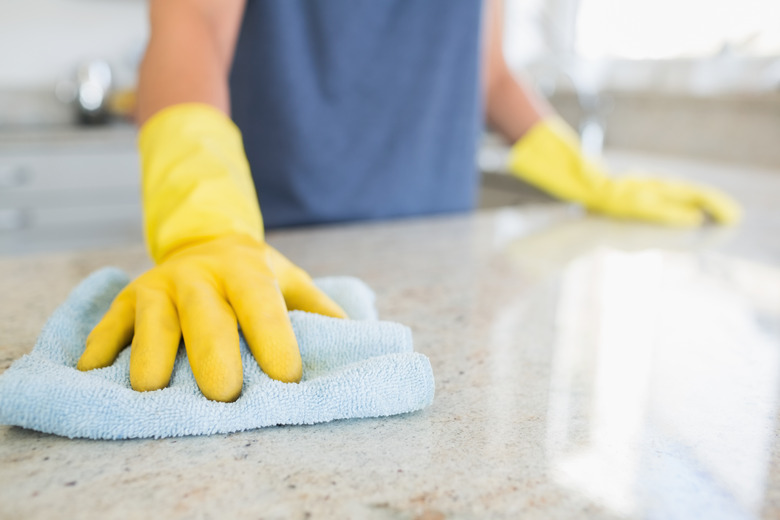How To Remove Gorilla Glue From Countertops
Gorilla Glue is one of the most popular heavy-duty adhesives available on the market. It has a myriad of uses and can work on a variety of different materials including wood, acrylic, particleboard, plastic, metal and cloth. Gorilla Glue gets its name from its strength. Unfortunately, the product's strength can be a negative when Gorilla Glue gets stuck on something unintentionally, like a countertop. Fortunately, there are ways to dissolve Gorilla Glue from a counter.
What is Gorilla Glue?
What is Gorilla Glue?
Gorilla Glue is a brand of powerful liquid adhesive. Not only is the glue's adhesive power nearly unmatched in the world of commercial adhesives, but the glue itself can also be manipulated once it has hardened.
You can sand, paint and cut hardened Gorilla Glue, which makes it easy to amend a project if you use too much glue and some leaks out of the sides. Should you have an accident like that and need to remove super glue from a countertop, there are several ways you can do it.
Removing Superglue From a Countertop
Removing Superglue From a Countertop
Depending on the material that your kitchen counter is made of, you have several options. If your countertop is made of a hard material like granite, marble, concrete or another natural stone, you can begin the removal process by trying to scrape the hardened superglue off.
The best thing to use to scrape hardened superglue is a putty knife or razor blade. Wear durable work gloves, especially when using a blade or sharp knife. Work gently at the corner of the glue spill and slowly use the sharp end of the blade to remove the superglue from the counter.
Be careful not to scratch the surface of the stone. This is especially true for a darker-colored stone that may show damage more easily. Proceed gently when using a blade to lift the hardened glue off the surface. Go piece by piece until all the superglue has been removed from the counter.
Removing Gorilla Glue from Wood or Particleboard
Removing Gorilla Glue from Wood or Particleboard
Removing Gorilla Glue from wood or particleboard can be even trickier than removing it from marble, granite or concrete. This is because wood is softer and particleboard isn't very durable. The same is true of laminate. Using a blade on softer or more delicate materials may mean damaging the countertop itself.
At the risk of damaging or even destroying the surface of your countertop, you may choose to buy a commercial Gorilla Glue solvent. First, you may begin by using acetone, which is an ingredient found in nail polish remover. Test the acetone on a hidden portion of your countertop.
If the acetone doesn't do any visible damage, dab some on top of the Gorilla Glue with a clean cloth until the glue is covered. Once the acetone has softened the glue, you can use a dull knife or putty scraper to gently pry off the glue.
Gorilla Glue Solvent
Gorilla Glue Solvent
Beyond these two products that can help you to remove the hardened glue physically, there are solvents that have been created to help remove Gorilla Glue and other superglues from surfaces to which they have become inadvertently adhered.
These commercial solvents are available at hardware and home improvement stores. If you find that a commercial-grade solvent isn't available in your area, you can attempt to use paint stripper, but be sure to test the chemical on an inconspicuous area of your countertop first to avoid damage.
